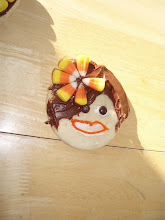We are half way through Ramadan, a month of fasting during the day and feasting in the evening. The eating of fresh dates is traditional when breaking the fast in the evening.
Dates have many nutritional benefits and are absolutely delicious. Most readers are probably familiar with dried dates. In the US, there are limited types of dried dates that are imported. However, in California, the infamous
Shields Date Garden provides lots of information about dates, including a provocative video. They farm a variety of dates and serve up a mean, thick, rich date shake.
Here, in Saudi Arabia, the variety of dates is mind numbing - in the most wonderful way. There are many stores dedicated to dates and grocery stores have special sections for dates and date related treats (date maamouls, dates covered in honey and sesame seeds, chocolate covered dates, etc.). Lucky for us in the Kingdom, fresh dates are now in season. We are still going through our first box of fresh dates that we bought a few weeks ago from a man selling them out of the back of his truck in our neighborhood.
Fresh dates are a unique experience. Look at the photograph of the lovely box of dates. See the ones that are half yellow and half brown? Those are the very special ones. The brown part is sweet and melt-in-your-moth soft. Tastes like a dried date, but more so, like date X 1000. The yellowish portion is surprisingly crunchy and tart. At first, we were put off by the combination and would only go for the all brown, sweet dates. Do not worry, we eventually saw the error in our ways and tried the half sweet/half raw dates again. The texture and flavor combination is one that we have never had before and we fell in love with them. Now we only have all sweet dates left in the box because we ate all the half-and-half dates up.
Eating fresh dates with
qawah is a treat, especially after fasting all day. But with such a big box, we wanted to do more. Inspired by our trips to Shields, we've been experimenting with different date shakes - some with yogurt, some with various types of non-dairy milks, and some with vanilla ice cream. So far, the vanilla ice cream version is the winner.
























